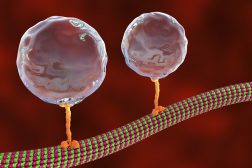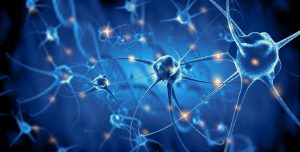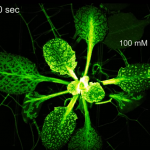
Ion
n., plural: ions
[ˈaɪ.ɑn]
Definition: an atom (or group of atoms) with an electrical charge
Table of Contents
We have been introduced to ions in varied fields of Science like Physics, Chemistry, and Biology. This article takes you on a journey to understand the fundamental concepts related to ions.
By the end of this article, you will know answers to basic questions like what is ion and example, what is the charge of an electron, what is the charge of a proton, are electrons positive or negative, what does ion mean, what makes an ion, how to find the charge of an ion, what is a cation, what is anion exchange, what is ionic form, what is ion energy, etc. So, let’s get started…
Ion Definition
Ion definition chemistry (ion meaning): An ion is a charge-carrying atom or a charge-carrying molecule. An ion’s net charge is never zero since it possesses an unequal number of electrons and protons. If the number of electrons and protons are balanced or equalized, the ion changes its state to a stable atom or molecule.
- An ion is formed when an atom loses or gains one or more electrons.
- A neutral atom will become a cation if it loses one or more electrons.
- An anion forms if it gains one or more electrons.
Types of Ions
Based on the type of charge and the ratio of protons and electrons, ions are of two types:
- Positively charged atoms & More protons > Fewer electrons: CATION (formed by loss of electrons in an atom)
Positively charged ions and positively charged particles are called cations. Sodium ions and calcium ions are examples of cations. - Negatively charged atoms & Fewer protons < More electrons: ANION (formed by the gain of electrons in an atom)
Negatively charged ions and negatively charged particles are called anions (negative ions).

Based on the number of atoms involved, ions are of two types:
- Consisting of a single atom: MONOATOMIC ION (an ion made of a single atom)
- Consisting of two or more atoms: POLYATOMIC ION / MOLECULAR ION

Formation of Ionic Compounds
What is an ionic compound? Since opposite charges attract each other, anions and cations being negatively and positively charged respectively, readily come together to form ionic compounds.

Watch this vid about ions:
Biology/Chemistry/Medicine definition:
An ion is a charge-carrying atom or molecule with an unequal number of electrons and protons. It is formed by the process of ionization and plays several important roles in the biological world. Anions are negatively charged ions whereas cations are positively charged ions.
Etymology: The word ion originated in the mid-19th century from the Greek word ‘ienai’ meaning ‘go’.
History of discovery
Let’s discuss a brief historical aspect of ions, the coining of various terms, and scientific discoveries.
Coining of The Term “Ion”
The term ion was coined in 1834 by English physicist cum chemist Michael Faraday. At that time, the ionic concept and the nature of the chemical species as it is known today weren’t clear. It was only known as the species traveling from one electrode to another electrode; both electrodes being present in an aqueous medium. An important observation of Faraday was the ability of some “medium species” to travel across the aqueous solution from one electrode to another. As observed, electrode (metal) dissolution at one end and the new metal formation (electrode increasing) at another end certainly had some mediating factors.

Coining of The Terms Anode, Cathode, Anion, and Cation
The terms anode, cathode, cation, and anion were coined by William Whewell.

Discovery of the Salt Dissociation Process upon Dissolution
When a solid crystalline salt is dissolved in an aqueous medium, the charged entities are dissociated as separate particles (Faraday’s ions). The discovery of this salt dissociation phenomenon upon its dissolution was explained by Svante Arrhenius in his 1884 dissertation. He was honored with the Nobel Prize in Chemistry in 1903. This discovery made it clear that the ionization process isn’t mediated only by the passage of electric current.

Characteristics
Some important characteristics of ions are:
- There are charged atoms or molecules.
- The proportion of electrons and protons is not balanced in ions, making them charged in nature.
- The ions of opposite charges are attracted to each other. While the ions of like charges are repelled by each other.
- The ion production process is called ionization. It can happen in all the 3 states of matter i.e. solid, liquid, and gas.

The gaseous state of ions is highly reactive and volatile. This makes them readily available for reactions with ions carrying the opposite charge. This interaction between the oppositely charged ions leads to the production of “neutral molecules” or “ionic compounds” or “ionic salts”.
The ionization process in a solid or a liquid state occurs through the interaction of salt with solvents. This leads to the production of solvated ions. These solvated ions are the ions complexed with the solvent molecules, making them more stable in nature. Their presence has been observed particularly in low temperatures. Examples include the solvated ions formed from the dissolved salts of the oceans and seas.

The movement of ions is traced by their respective trajectories when deflected by the magnetic field(s).

The size of atoms and molecules is determined by the number of electrons possessed (scientifically termed electron cloud). The reason for this is- electrons are relatively smaller in mass and possess greater space-occupying properties.

Anions are usually larger in physical size than their parent atom/molecule. It is because they have extra or more electrons than the parent atom/molecule.
Cations are usually smaller in physical size than their parent atom/molecule. It is because they have fewer electrons than the parent atom/molecule, thus a smaller electron cloud.
Quick fact!
There is a special cation that possesses absolutely NO ELECTRONS. Yes, this is the cation of a hydrogen atom (hydrogen ion). Since a hydrogen atom possesses only one proton and one electron. Upon ionization and cation formation, even that one electron is lost. This leaves the hydrogen cation with only 1 proton. This makes the hydrogen cation even smaller in size than the very small hydrogen atom!
When acids are dissolved in solution, they release protons (H+). The amount of protons released determines the acidity. So, when asked — “What ions do acids release in solution?” or “What ions do acids have? — now you know the answer.

Anions and cations
- Etymology:
- The term anion has been derived from a Greek word ‘ἄνω’ i.e. ‘ano’ meaning “up”.
- The term cation has been derived from a Greek word ‘κάτω’ i.e. ‘kato’ meaning “down”.
- Finding Net Charge on an Ion: It is equal to the number of protons minus the number of electrons.
- The net charge on cation: Positive charge (as the number of electrons is less due to loss of electrons)
- The net charge on anion: Negative charge (as number of electrons is more due to gain of electrons)
- Representation and Naming of ions: Ions that possess multiple charges are named by putting a prefix like ‘di’ for an ion with -/+ 2 charge, ‘tri’ for ion with -/+ 3 charge, and so on.
- Ion example: an ion with −3 charge is a “trianion”.
- Cation example: an ion with +2 charge is a “dication”
- Concept of zwitterions: An ion that possesses both positive and negative charges but at different locations within the ionic molecule is called a zwitterion. It is a neutral molecule as the overall charge gets balanced for the species.

- Measurement of an ionic species: We measure the ionic species by their ionic radius. Usually, the radius of cations is lesser (nearly <10-10 m) than that of anions. This is the reason that anions occupy most of the space in crystals while cations occupy only minimal space due to their small sizes. Cations usually just fit into the spaces between the anions.

- Movement of ions during Electrolysis: Anions travel to the anode while cations travel to the cathode during electrolysis.

Natural occurrences
- Presence in nature: Ubiquitous
- Varied roles in different phenomena of the environment.
- Ionic species possess different colors than their parent atoms or molecules. This phenomenon explains the differently colored gemstones as the metal ions constituting the gemstones absorb lights of different wavelengths.
- What are metallic ions? Metallic ions form from the atom of a metal element.

Related Technology
- Use in Science: Ion production and utilization find use in diverse fields. The ionization process is mediated by both physical and chemical stimulants. Physical factors like high voltage and temperature are helpful in the production of ions. They are particularly used in devices like mass spectrometers, ion implanters, ion engines, and optical emission spectrometers.

- Use in households: These physical stimulants for ionization are also exploited in modern air purification systems for microbial disruption. They are also used in smoke detectors.

Detection of ionizing radiation
When radiation ionizes a gas, an ion pair is formed. An ion pair is constituted by a free electron and a cation (positively charged ion). The detector in the ionization chamber detects the nature of the radiation (like X-rays, alpha, beta, or gamma) by collecting the charges formed in the irradiation process. These charges are collected by applying an electric field.

Chemistry
Let’s look briefly at the chemical aspect of ions and the ionization process.
Denoting the charged state
The chemical formula of an ion/ion symbol: The net charge of the ion is written in the superscript. It is written immediately after the ion’s atom/molecular denotation. The sign +/- denotes the net positive or negative charge, respectively. The number 1/2/3/so explains the magnitude of charge. Some chemists prefer to put the +/- sign multiple times equivalent to the magnitude in order to describe the magnitude of the charge. Example: Fe2+ is also denoted as Fe++.
Sub-classes
- Radical Ion. A radical ion is an ion with unpaired electrons. They are very reactive in nature.
- Oxyanion. Oxyanion is an ion containing oxygen.
- Organic ions. Organic ions are ions containing at least one carbon (C) to hydrogen (H) bond.
- Carbocation. A carbocation is a positively charged organic ion.
- Carbanion. A carbanion is a negatively charged organic ion
- Spectator ions. What are spectator ions? They are ions that don’t take part in a chemical reaction.
- Mobile ions. What are mobile ions? Mobile ions are ions that can move.
- Diatomic ions. What are diatomic ions? They are ions with 2 types of atoms.
- Neutral ion. What is a neutral ion? A neutral ion is an ion with no net charge.
Formation
How are ions formed?
Ions can be formed by many different physical and chemical processes. The process of formation of ions is called ionization.
In the physical ionization process, a fluid (a gas or a liquid) is ionized. This causes a number of molecular collisions in the fluid in a spontaneous manner which results in the formation of an ‘ion pair’. An ion pair comprises a free electron (e-) and a positive ion (cation).
In the chemical ionization process, many different ways are possible. One of them could be simply dissolving salt in a liquid leading to the separation of the two ions that form the salt. Another way could be via introducing a current into a conducting solution. Chemical ionization also happens by the dissolution of an anode.
Formation of monatomic ions
- Formation via both gaining or losing of electrons to or from the outer valence shell/s in an atom.
- The process is called “ionization”.
- A more common process of ionization in chemistry: Transfer of electrons (e-) between atoms/molecules.
Formation of polyatomic and molecular ions
- Formation via both gaining or losing of elemental ions in neutral molecules.
- These ions are relatively more stable than the radical ions.
- The formation of polyatomic and molecular ions ensures that while the acquisition of a charge, the electronic configuration also remains stable.
Ionization potential
Ionization energy and ionization potential are defined as the lowest amount of energy required for the detachment of a loosely attached electron of a gaseous atom or molecule.
Ionic bonding
Oppositely charged ions are attracted to each other. The bond established by the coming together of two oppositely charged ions is called an ionic bond. The formation of ionic bonding leads to the subsequent formation of a crystal lattice. This leads to the formation of an ionic compound.
Common ions
Examples of some common ions are aluminum ion (Al3+), chloride anion (Cl–), sodium ion (Na+), hydride ion (H–), oxide ion (O2-), etc.
More examples:
- Oxygen ion charge: -2
- Iodine ion charge: -1
- Potassium ion charge: +1 (Common question: “Is potassium positive or negative?” Answer: positive)
- Sodium ion charge: +1 (Common question: “Is sodium positive or negative?” Answer: positive)
- Calcium ion charge: +2
- Bromide ion Br charge: -1
- Nitrate ion NO3 charge: -3
- Chloride charge of Cl: -1
- Lead Pb charge: +2/+4
- Charge of aluminum: +3
- Charge of hydronium ion: +1 (Common question: “What is hydronium ion? Answer: it’s a polyatomic ion with an overall positive charge and formula as H3O+)
- Charge of bicarbonate ions: -3 (Common questions: “What are bicarbonate ions?” Answer: they are polyatomic ions with an overall negative charge. “What is carbonate ion?” Answer: it’s simply CO32-.)
- Halide ion charge: -1 [Common question: “What is a halide ion?” Answer: it’s a halogen atom (fluorine, chlorine, iodine, bromine) bearing a negative charge. It’s an anion of halogen atoms.]
- Fluoride ion charge: -1 (Common question: “What is fluoride ion?” Answer: it’s the name of a fluorine ion)
- Magnesium ion charge: +2 (Common question: “What ion will magnesium form? Answer: cation)
- Phosphate ion charge: -3 (Common question: “What is phosphate ion?” Answer: it’s a phosphide anion)
Biocides working on the principle of “Ion Gradient Disruption”
Biocides Used in pathogen, pest, weed, and fungi Management:
Biological cells maintain a well-coordinated system in order to sustain life. There are several ion channels in order to maintain proper cell signaling and cell metabolism of the organisms. If the ionic gradients in the cell and across their membranes are disrupted, this can turn disastrous for the cell’s health. This has been used as a basis to counter pathogens, pests, weeds, and fungi in agricultural fields. Many natural and artificial biocides work on this principle of disrupting the ionic gradients.
Example: Gramicidin, amphotericin disrupt ionic gradients.

An important point to note here is that gramicidin not only disrupts the ionic gradient in bacterial cells but also in human cells. That’s why it’s only used as topical medication and that too in very low doses. It is not used internally. Hence, one should always take medicines on prescription by a physician rather than googling stuff. ☺
Answer the quiz below to check what you have learned so far about ions.
References
- Frank A. J. L. James, ed. (1991). The Correspondence of Michael Faraday, Vol. 2: 1832-1840. p. 183. ISBN 9780863412493. Archived from the original on 2021-04-14. Retrieved 2020-10-16.
- Press, Frank; Siever, Raymond (1986). Earth (14th ed.). New York: W. H. Freeman and Company. p. 63. ISBN 0-7167-1743-3. OCLC 12556840
- Todd, J. F. J. (1991). “Recommendations for Nomenclature and Symbolism for Mass Spectroscopy (including an appendix of terms used in vacuum technology)(IUPAC Recommendations 1991)”. Pure Appl. Chem. 63 (10): 1541–1566. doi:10.1351/pac199163101541.
- Bunnet, J.F.; Jones, R.A.Y. (1968). “Names for hydrogen atoms, ions, and groups, and for reactions involving them (Recommendations 1988)” (PDF). Pure Appl. Chem. 60 (7): 1115–6. doi:10.1351/pac198860071115
©BiologyOnline.com. Content provided and moderated by Biology Online Editors.








